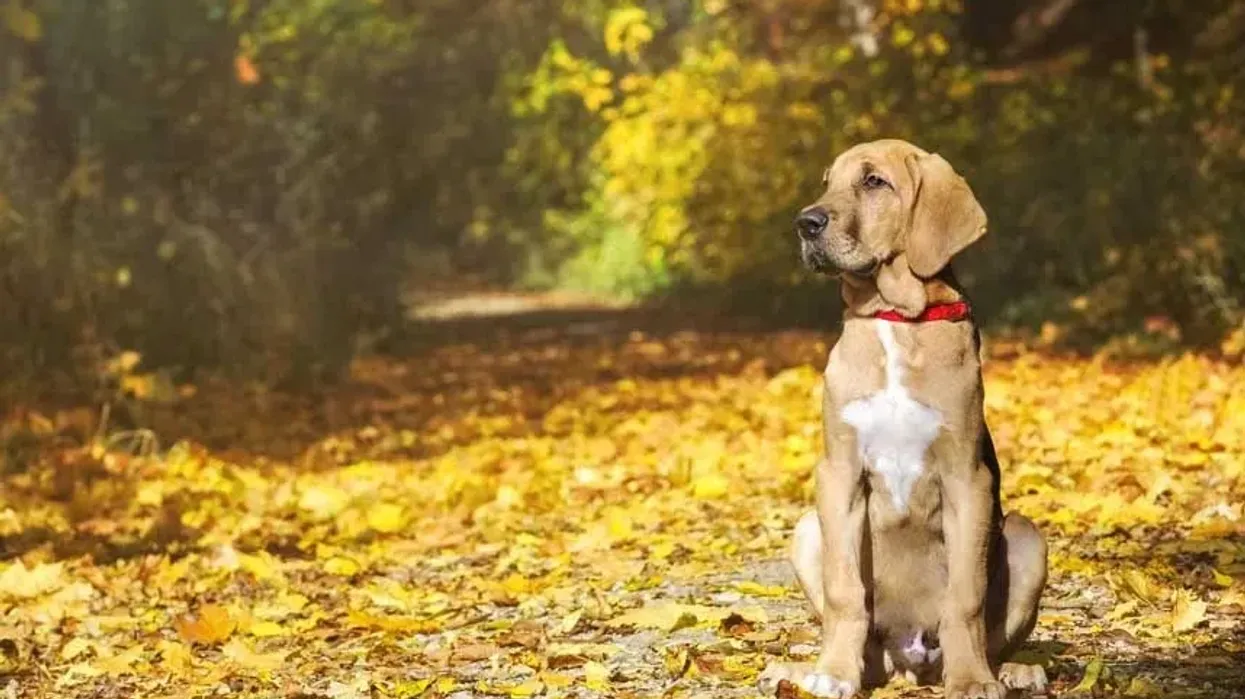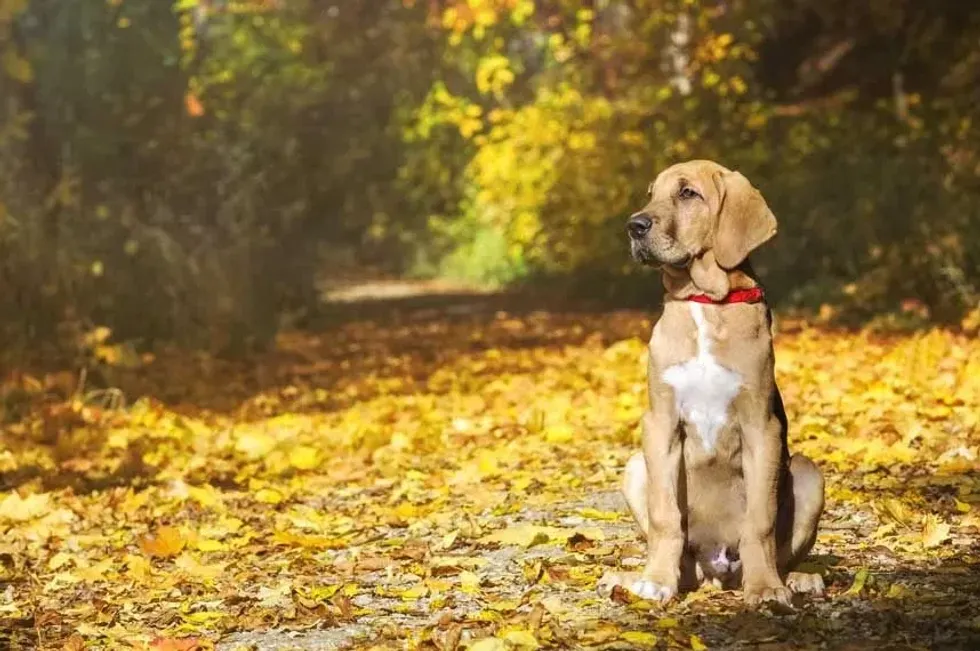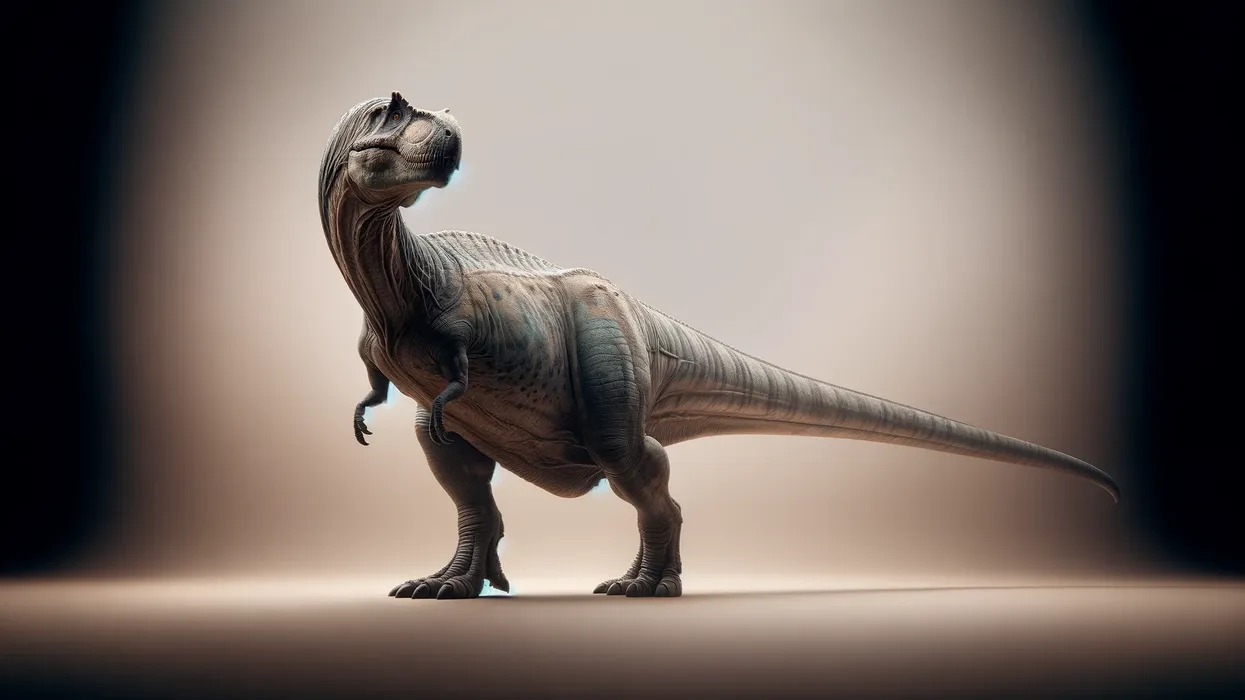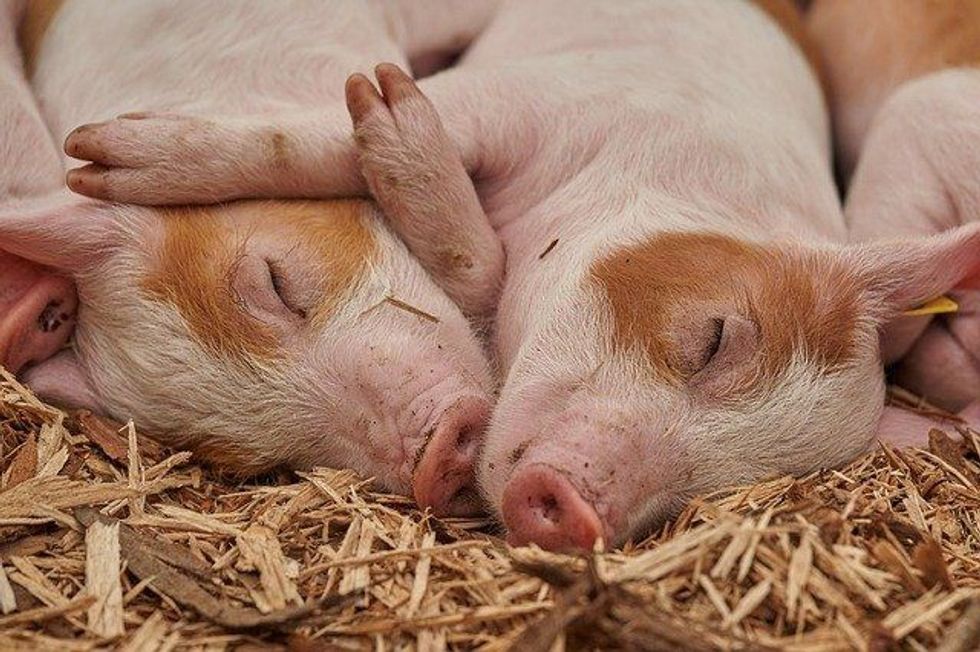Fun Broholmer Facts For Kids

Also known as the Danish mastiff or the Danish Broholmer, the dog breed is originally from Denmark. King Frederick VII made the dogs more popular as pets.
Although the survival of these dogs became challenging during the Second World War and industrialization, their ill effects could not wipe out the breed. In the year 2009, the first Broholmer dog breed was imported to the USA. The American Kennel Club has categorized these dogs under Foundation Stock Service.
A Broholmer is known to be a versatile dog breed since time immemorial. The dog has served as a stag-hunter, guard dog, and loyal pet.
Similarities can be identified between a Broholmer and the Great Dane although the former belongs to Denmark while the latter is originally from Germany. Both are known to be adept as watchdogs and loving pets. Both breeds are sturdy and healthy.
They require moderate grooming. However, exercise and training determine the mannerisms of both breeds.
If you love to explore enlightening facts about uncommon dog breeds then these Broholmer facts have been curated just for you. You might also find interest in reading these facts about some other dog breeds like the Labrabull and the bulldog.
Broholmer Interesting Facts
What type of animal is a Broholmer?
A Broholmer is a mastiff-type dog.
What class of animal does a Broholmer belong to?
A Broholmer falls under the class Mammalia.
How many Broholmers are there in the world?
During the Second World War, the existence of this famous Danish dog was threatened and their population diminished considerably. However, the breed survived the harsh times with the help of some ardent lovers who revived their numbers. Currently, Broholmers are available for adoption across the world (except Antarctica).
They are existent in large numbers. However, the accurate details of their current number are unavailable due to the lack of records. It can be said that these dogs are nowadays pretty common in households.
Where does a Broholmer live?
Originally the native of Denmark, a Broholmer can now be traced in several parts of the world. In modern times, they live in comfortable homely spaces as companions to human beings. They can be found in houses in a village setting as well as cities and suburban areas.
What is a Broholmer's habitat?
The Broholmer has served humans since the Middle Ages. First, as an aide to the hunters and then as a guard dog.
In all cases, they had lived with their owners in their houses and manors and still continue to do so. They generally live with their owners and their family members but can also be found in rescues and shelters.
Who do Broholmers live with?
Broholmers share their home with their owners and the other family members. They are extremely dependent on their human counterparts for their survival as they cannot survive when stranded alone. Life in the wilderness is unimaginable for these soft-natured dogs.
How long does a Broholmer live?
The life span of Broholmers ranges between 8-11 years depending on the lifestyle that they lead. A Broholmer is a healthy dog breed that generally comes with fewer health issues when provided with proper care.
How do they reproduce?
The reproduction process in any dog must be initiated and carried out under the guidance and supervision of a professionally experienced breeder. Once both genders enter the puberty stage, the Broholmer breeding process can be initiated.
However, breeding must be commenced when both the dogs are at the peak of their health as this would ensure a healthy litter. Normally, the females go through certain stages of the heat cycle, that is, the Proestrus, Estrus, Diestrus, and lastly, Anestrus (when the females become unreceptive towards the males).
The heat cycle lasts for about six months in every female. This is the ideal time for mating. After conception, the females enter the gestation period that stays for 60-64 days.
During this period, the females must be kept under constant medical supervision and intensive care. The females can give birth to a litter of four to eight Broholmer puppies.
What is their conservation status?
The conservation status of Broholmers is not listed by the International Union for Conservation of Nature (IUCN) Red List. This is perhaps because a Broholmer can easily be traced in several households and the dog breed does not fall under the purview of extinction.
Broholmer Fun Facts
What do Broholmers look like?
Among all dog breeds, the Danish Broholmer is a large-sized dog. They are available in shades of golden-red, tan, or primarily yellow and sometimes possess white markings and even with a black mask. They are muscular and have a well-built body structure with a massive head. Their skin hangs loose with a thick undercoat.
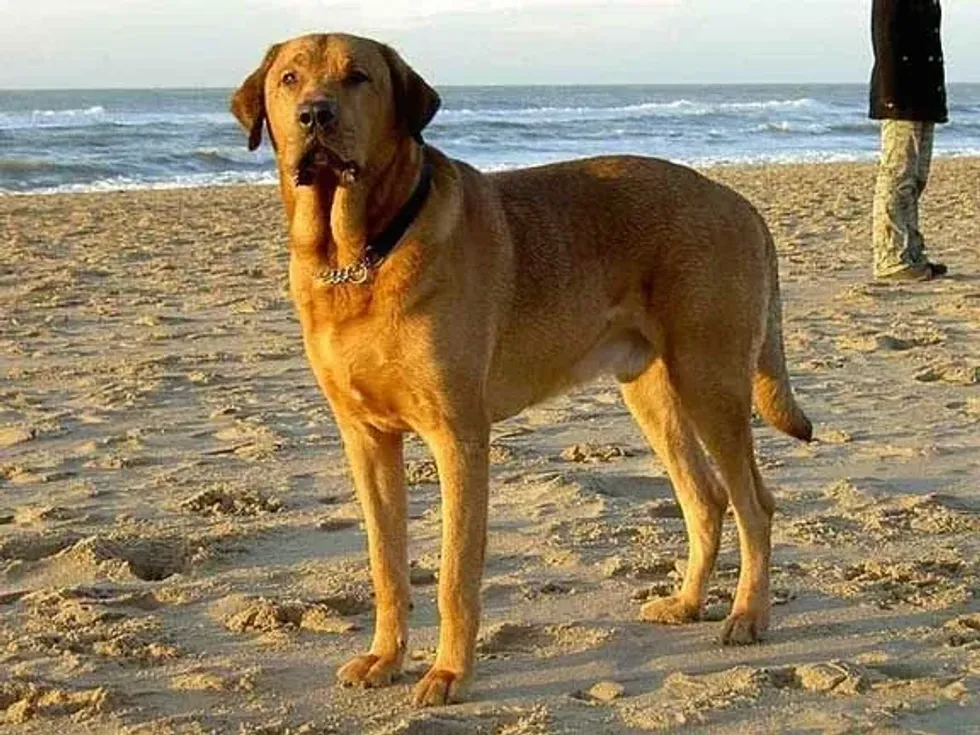
How cute are they?
Broholmer puppies are cuter than grownups. They have a poignant appearance that speaks of confidence. They possess a very strong personality along with an appealing appearance that makes them so much more lovable.
How do they communicate?
Dogs normally communicate their feelings by using both gestures and vocalizations. Vocalizations include barking, growling, whining, whimpering, howling, and snarling. At every level, the expressions hold different meanings. A dog can bark when they are happy and excited but it differs from barking aggressively when they feel threatened or scared of some impending danger.
Gestures and body language also play a vital role in communication. Wagging of the tail is a common gesture of happiness and excitement. A dog might extend its paw just to grab your attention!
A Broholmer is popularly known to be a calm and composed dog. Nevertheless, like any other dog, it can vocalize its thoughts by barking.
A Broholmer normally stays quiet but it can also bark when it feels agitated, anxious, or even in excitement. It can also bark to sound an alarm or alert people when it senses danger looming nearby. However, these dogs generally do not indulge in too much barking or portrayals of aggression.
How big is a Broholmer?
A Broholmer is a large dog breed. The height of a Broholmer ranges between 27.5-29.5 in (70-75 cm).
While the height of a female is comparatively less at approximately 27.5 in (70 cm), a male stands at around 29.5 in (75 cm). The Danish dog is undoubtedly larger than a Labrador or golden retriever. However, the Broholmer size is comparatively smaller than the Great Dane which stands at 28-34 in (71-86 cm).
How fast can a Broholmer run?
Broholmers can achieve a running speed of 20 mph (32 kph). These mastiff-type dogs are highly energetic yet calm and composed. So, a regular exercise regime is necessary to channelize most of their energy and turn them into fit and healthy dogs.
How much does a Broholmer weigh?
On average, the weight of a Broholmer ranges between 90-150 lb (41-68 kg). While the males weigh around 110-150 lb (50-68 kg), the females weigh approximately 90-130 lb (41-58 kg).
This makes them slightly smaller than the Spanish mastiff. These dogs are quite bulky and cannot be carried to places easily. However, they can tag along when put on a leash.
What are the male and female names of the species?
A male Broholmer is called a dog while a female is regarded as a bitch.
What would you call a baby Broholmer?
A baby Broholmer is often called a puppy but it is also referred to as a pup affectionately. Broholmers are named after the Sehested of Broholm, who was a game-keeper in the 18th century.
What do they eat?
Broholmers are omnivores. The diet of a Broholmer must be fixed with the consultation of the vet as the diet largely depends on the weight, age, gender, and health conditions of the dog.
Generally, a large mastiff-like Broholmer must be provided with a highly nutritious diet comprising raw meat, dry food, fish, animal fat, fruits, vegetables, and others.
A balanced diet rich in essential proteins, minerals, vitamins, omegas, and fats is necessary for the growth and development of the dog. An adult Broholmer must be offered two meals daily while a Broholmer puppy can be fed two or three meals in small portions per day.
Are they hypoallergenic?
It is widely believed that Broholmers are not hypoallergenic. Generally, a Broholmer sheds very little. Nevertheless, there is a probability that people with allergies can have problems with this dog breed. However, this fact cannot be assured as it needs more detailed speculation and research. Some other hypoallergenic dogs include the Shih Tzu, poodle, and the Maltese.
Would they make a good pet?
A dog's temperament largely depends on the social setting, training, and treatment that they encounter right from the initial stages of growth and development. Broholmers have a unique temperament.
Popularly known to be a gentle and obedient dog, the Broholmer is good-tempered given that it is exposed to proper training and socialization from the very initial stages. The guard dog is of a calm and polite nature.
They are also very good with children as they are emotionally sensitive and often feel protective of children due to their guarding instincts.
However, their behavior is a reflection of the training that they receive. Danish Broholmer dogs can prove to be magnificent pets when they are put through rigorous physical and social training.
Socialization plays a vital role in their training. When it comes to training the Broholmer, these dogs are extremely obedient, benign, and modest.
Although some dogs might appear to be a bit reserved with strangers, they are capable of mingling with complete strangers after proper socialization. Moreover, providing training according to the needs of the family and society is crucial for the dog to understand people and form a close bond with the family.
The Broholmer cost normally ranges from $1,500-$1,800 when adopted as a puppy. The Broholmer is a healthy dog with some minor health concerns.
The large dog from Denmark is prone to health issues like elbow dysplasia, patellar luxation, and hip dysplasia. Additionally, these breeds have certain requirements that include occasional grooming as well as daily training and exercise.
Grooming includes maintenance of the coat by stripping or brushing, dental care, cleaning up the ear, trimming the nails, and eye care. Exercise regimes might include playing fetch in the backyard, morning walks, or even long jogs.
A regular half an hour exercise coupled with proper nutrition is enough to ensure greater longevity. The breed is moderately active which implies that lack of exercise can make them lethargic and unreceptive towards other training procedures.
Did you know...
The Society for Reconstruction of the Broholmer Breed was aided by the Danish Kennel Club in its project targeted at reviving the population of Broholmers.
Although the Danish Broholmer was rendered an identification by the Federation Cynologique Internationale (FCI), it remained undiscovered by most of the countries, especially outside the European borders.
In June 2009, the members of the Broholmer Club of USA namely Kathy Kimmeth and Joe first imported the Danish mastiff to American soil.
Although the American Kennel Club has not yet offered recognition to the breed, it has been grouped under the Foundation Stock Service.
Where does the Broholmer get its name from?
The dog breed derived its name from Count Sehested of Broholm, an 18th-century gamekeeper, who fancied dogs like the Molossers and English Mastiffs. He has been credited for breeding the Broholmer dog breed and expanding their numbers during the time.
Broholmer can be pronounced easily as a 'bro-hol-mer'.
History of the Broholmer
The history of these dogs dates back to the Middle Ages when they were originally bred to hunt deer. Gradually they transformed into guard dogs in charge of farms or large manors.
Around the 18th century, Count Sehested of Broholm took the initiative of breeding these dogs.
However, they were on the verge of extinction after the disastrous World War II. The breed survived the atrocious aftereffects of the war followed by industrialization owing to the assiduous efforts of some admirers of the Broholmer breed who later unified to form the Society for Reconstruction of the Broholmer Breed.
King Frederick VII of Denmark was an ardent admirer of the dog breed and owned a number of Broholmers most of whom he named Tyrk. Tyrk was the most adored and favorite dog of Frederick VII and to honor its death, it was donated to the Copenhagen Zoological Museum.
Here at Kidadl, we have carefully created lots of interesting family-friendly animal facts for everyone to discover! Learn more about some other dogs from our Bohemian shepherd facts and Pyrenean Shepherd facts pages.
You can even occupy yourself at home by coloring in one of our free printable Broholmer Dog coloring pages.
We Want Your Photos!
More for You
See All
Bachelor of Arts specializing in Journalism and Mass Communication, Postgraduate Diploma in Sports Management

Moumita DuttaBachelor of Arts specializing in Journalism and Mass Communication, Postgraduate Diploma in Sports Management
A content writer and editor with a passion for sports, Moumita has honed her skills in producing compelling match reports and stories about sporting heroes. She holds a degree in Journalism and Mass Communication from the Indian Institute of Social Welfare and Business Management, Calcutta University, alongside a postgraduate diploma in Sports Management.
Bachelor of Arts specializing in Economics

Gowri RaoBachelor of Arts specializing in Economics
With a bachelor's degree in Economics from Krea University, Gowri is a highly skilled data analyst and an expert in regression and causation modeling. Her interests in economic trends, finance, and investment research complement her professional expertise. In addition to her professional pursuits, Gowri enjoys swimming, running, and playing the drums, and she is also a talented tutor.
Disclaimer
1) Kidadl is independent and to make our service free to you the reader we are supported by advertising. We hope you love our recommendations for products and services! What we suggest is selected independently by the Kidadl team. If you purchase using the Buy Now button we may earn a small commission. This does not influence our choices. Prices are correct and items are available at the time the article was published but we cannot guarantee that on the time of reading. Please note that Kidadl is a participant in the Amazon Services LLC Associates Program, an affiliate advertising program designed to provide a means for sites to earn advertising fees by advertising and linking to Amazon. We also link to other websites, but are not responsible for their content.
2) At Kidadl, we strive to recommend the very best activities and events. We will always aim to give you accurate information at the date of publication - however, information does change, so it’s important you do your own research, double-check and make the decision that is right for your family. We recognise that not all activities and ideas are appropriate for all children and families or in all circumstances. Our recommended activities are based on age but these are a guide. We recommend that these ideas are used as inspiration, that ideas are undertaken with appropriate adult supervision, and that each adult uses their own discretion and knowledge of their children to consider the safety and suitability. Kidadl cannot accept liability for the execution of these ideas, and parental supervision is advised at all times, as safety is paramount. Anyone using the information provided by Kidadl does so at their own risk and we can not accept liability if things go wrong.
3) Because we are an educational resource, we have quotes and facts about a range of historical and modern figures. We do not endorse the actions of or rhetoric of all the people included in these collections, but we think they are important for growing minds to learn about under the guidance of parents or guardians.
